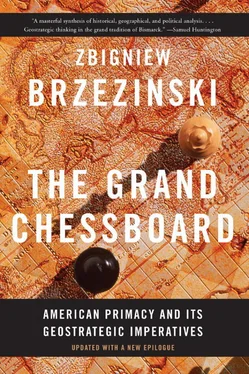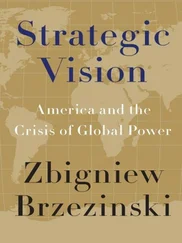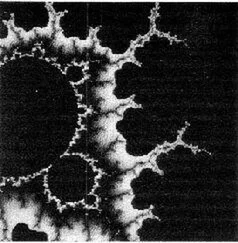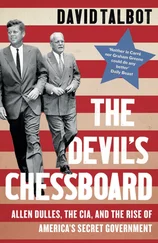Thereafter, Europe became both the locus of global power and the focus of the main struggles for global power. Indeed, in the course of approximately three centuries, the small northwestern periphery of the Eurasian continent attained—through the projection of maritime power and for the first time ever—genuine global domination as European power reached, and asserted itself on, every continent of the globe. It is noteworthy that the Western European imperial hegemons were demographically not very numerous, especially when compared to the numbers effectively subjugated. Yet by the beginning of the twentieth century, outside of the Western Hemisphere (which two centuries earlier had also been subject to Western European control and which was inhabited predominantly by European emigrants and their descendants), only China, Russia, the Ottoman Empire, and Ethiopia were free of Western Europe’s domination (see map on page 18).
However, Western European domination was not tantamount to the attainment of global power by Western Europe. The essential reality was that of Europe’s civilizational global supremacy and of fragmented European continental power. Unlike the land conquest of the Eurasian heartland by the Mongols or by the subsequent Russian Empire, European overseas imperialism was attained through ceaseless transoceanic exploration and the expansion of maritime trade. This process, however, also involved a continuous struggle among the leading European states not only for the overseas dominions but for hegemony within Europe itself. The geopolitically consequential fact was that Europe’s global hegemony did not derive from hegemony in Europe by any single European power.
Broadly speaking, until the middle of the seventeenth century, Spain was the paramount European power. By the late fifteenth century, it had also emerged as a major overseas imperial power, entertaining global ambitions. Religion served as a unifying doctrine and as a source of imperial missionary zeal. Indeed, it took papal arbitration between Spain and its maritime rival, Portugal, to codify a formal division of the world into Spanish and Portuguese colonial spheres in the Treaties of Tordesilla (1494) and Saragossa (1529). Nonetheless, faced by English, French, and Dutch challenges, Spain was never able to assert genuine supremacy, either in Western Europe itself or across the oceans.
Spain’s preeminence gradually gave way to that of France. Until 1815, France was the dominant European power, though continuously checked by its European rivals, both on the continent and overseas. Under Napoleon, France came close to establishing true hegemony over Europe. Had it succeeded, it might have also gained the status of the dominant global power. However, its defeat by a European coalition reestablished the continental balance of power.
For the next century, until World War I, Great Britain exercised global maritime domination as London became the world’s principal financial and trading center and the British navy “ruled the waves.” Great Britain was clearly paramount overseas, but like the earlier European aspirants to global hegemony, the British Empire could not single-handedly dominate Europe. Instead, Britain relied on an intricate balance-of-power diplomacy and eventually on an Anglo-French entente to prevent continental domination by either Russia or Germany.
The overseas British Empire was initially acquired through a combination of exploration, trade, and conquest. But much like its Roman and Chinese predecessors or its French and Spanish rivals, it also derived a great deal of its staying power from the perception of British cultural superiority. That superiority was not only a matter of subjective arrogance on the part of the imperial ruling class but was a perspective shared by many of the non-British subjects. In the words of South Africa’s first black president, Nelson Mandela: “I was brought up in a British school, and at the time Britain was the home of everything that was best in the world. I have not discarded the influence which Britain and British history and culture exercised on us.” Cultural superiority, successfully asserted and quietly conceded, had the effect of reducing the need to rely on large military forces to maintain the power of the imperial center. By 1914, only a few thousand British military personnel and civil servants controlled about 11 million square miles and almost 400 million non-British peoples (see map on page 20).
In brief, Rome exercised its sway largely through superior military organization and cultural appeal. China relied heavily on an efficient bureaucracy to rule an empire based on shared ethnic identity, reinforcing its control through a highly developed sense of cultural superiority. The Mongol Empire combined advanced military tactics for conquest with an inclination toward assimilation as the basis for rule. The British (as well as the Spanish, Dutch, and French) gained preeminence as their flag followed their trade, their control likewise reinforced by superior military organization and cultural assertiveness. But none of these empires were truly global. Even Great Britain was not a truly global power. It did not control Europe but only balanced it. A stable Europe was crucial to British international preeminence, and Europe’s self-destruction inevitably marked the end of British primacy.
In contrast, the scope and pervasiveness of American global power today are unique. Not only does the United States control all of the world’s oceans and seas, but it has developed an assertive military capability for amphibious shore control that enables it to project its power inland in politically significant ways. Its military legions are firmly perched on the western and eastern extremities of Eurasia, and they also control the Persian Gulf. American vassals and tributaries, some yearning to be embraced by even more formal ties to Washington, dot the entire Eurasian continent, as the map on page 22 shows.
America’s economic dynamism provides the necessary precondition for the exercise of global primacy. Initially, immediately after World War II, America’s economy stood apart from all others, accounting alone for more than 50 percent of the world’s GNP. The economic recovery of Western Europe and Japan, followed by the wider phenomenon of Asia’s economic dynamism, meant that the American share of global GNP eventually had to shrink from the disproportionately high levels of the immediate postwar era. Nonetheless, by the time the subsequent Cold War had ended, America’s share of global GNP, and more specifically its share of the world’s manufacturing output, had stabilized at about 30 percent, a level that had been the norm for most of this century, apart from those exceptional years immediately after World War II.
More important, America has maintained and has even widened its lead in exploiting the latest scientific breakthroughs for military purposes, thereby creating a technologically peerless military establishment, the only one with effective global reach. All the while, it has maintained its strong competitive advantage in the economically decisive information technologies. American mastery in the cutting-edge sectors of tomorrow’s economy suggests that American technological domination is not likely to be undone soon, especially given that in the economically decisive fields, Americans are maintaining or even widening their advantage in productivity over their Western European and Japanese rivals.
To be sure, Russia and China are powers that resent this American hegemony. In early 1996, they jointly stated as much in the course of a visit to Beijing by Russia’s President Boris Yeltsin. Moreover, they possess nuclear arsenals that could threaten vital U.S. interests. But the brutal fact is that for the time being, and for some time to come, although they can initiate a suicidal nuclear war, neither one of them can win it. Lacking the ability to project forces over long distances in order to impose their political will and being technologically much more backward than America, they do not have the means to exercise—nor soon attain—sustained political clout worldwide.
Читать дальше












